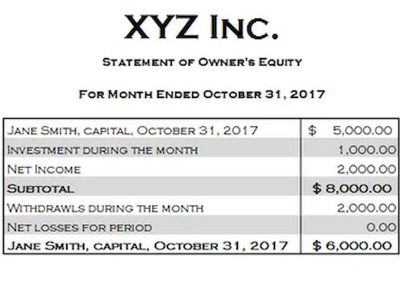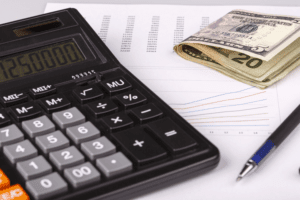Content
- What is Days Sales Outstanding? (DSO)
- Bad Debt to Sales:
- How to Calculate Days Sales Outstanding
- How Do You Calculate Days Sales Outstanding
- Calculating Days Sales Outstanding (DSO)
- Why is Days Sales Outstanding (DSO) important?
- World’s Only AI-Powered Accounts Receivable Solution to Create Working Capital Impact

Needless to say, a small business can use its days sales outstanding number to identify and flag customers that are weighing it down by not paying promptly. In addition, DSO is not a perfect indicator of a company’s accounts receivable efficiency. Fluctuating sales volumes can affect DSO, with any increase in sales lowering the DSO value.
What is considered a good DSO?
A high DSO number can indicate that the cash flow of the business is not ideal. It varies by business, but a number below 45 is considered good. It's best to track the number over time.
Be sure and subtract any returns or adjustments, and if you don’t track cash sales automatically, you’ll have to subtract those as well. It’s up to you to determine the period you want to cover when calculating DSO. Smaller businesses may find it more useful to calculate DSO quarterly, although businesses that frequently sell on credit should do a DSO calculation monthly.
What is Days Sales Outstanding? (DSO)
It is important to remember that the formula for calculating DSO only accounts for credit sales. While cash sales may be considered to have a DSO of 0, they are not factored into DSO calculations. If they were factored into the calculation, they would decrease the DSO, and companies with a high proportion of cash sales would have lower DSOs than those with a high proportion of credit sales. The best way to use Days Sales Outstanding is to consistently track the results. For example, tracking DSO monthly will allow you to spot seasonal trends, view an increase or decrease in days outstanding, and proactively address any potential issues that may be spotted.

To calculate your best possible DSO, divide a specific portion of accounts receivable by your total credit sales. Offering incentives such as discounts or coupons to early-paying customers will improve your DSO.
Bad Debt to Sales:
This ensures that the management of the company’s accounts receivables is efficient. In short, the Days Sales Outstanding is a financial ratio that’s mean to illustrate/ show if the accounts receivables of a company are well managed. By analyzing this metric, a company/ business can round up the average number of days it takes for their customers to pay invoices. DSO or days sales in receivable is a fancy accounting word for a calculation that businesses use to estimate how many days – on average – it takes clients to pay their invoices. Days sales outstanding is part of your accounts receivable balance sheet. The period of time used to measure DSO can be monthly, quarterly, or annually. If the result is a low DSO, it means that the business takes a few days to collect its receivables.
The number of days outstanding is subject to your customers’ ability to pay their invoices on time. While sales are important, if your company isn’t carrying out the right credit evaluations in the first place, you’ll struggle further down the line. Days sales outstanding, otherwise known as DSO, is an essential formula for measuring how efficient a company is at retrieving outstanding payments. If you’re generating healthy sales but it’s taking your company too long to see the fruits of its labour, your cash flow is going to dry up, fast. DSO is the average time expressed in the number of days businesses or companies take to retrieve their Accounts Receivables or collect cash for their credit sales. A lower DSO value indicates that it’s taken fewer days to collect payments for the sales you’ve made.
How to Calculate Days Sales Outstanding
It is important to first note that the DSO calculation only considers credit sales; it does not account for cash transactions. These automated solutions should be a part of a wider plan for following up outstanding balances. Not everycustomer journeywill be lineal, there will be some clients who suddenly fall behind on payments due to financial setbacks or a lack of business. Your automated responses must be adaptable to suit these needs, otherwise, you’ll end up wasting even more resources trying to fix the problem. If you feel like this is a major factor affecting your DSO, it may be worth introducing specific incentives and penalties to make sure your sales team sticks to your company’s customer credit requirements. If you’re offering recurring services, then auto-charging is your best option. Storing your customers’ credit card details is an easy way to get paid, since you can charge them right on the due date.
- Years of low interest rates and easy credit have allowed companies to take their eye off the ball when it comes to DSO management.
- They also improve the likelihood that you’ll get the rest of your money, on time, without having to chase a client for payment.
- In addition to calculating an average DSO on past due accounts, it’s also easy to calculate your best possible low DSO.
- Thus, the average number of days that Company Xing takes to recover cash for its credit sales or debts is 73 days.
- It is calculated by dividing the average account receivable balance by the company’s average daily sales.
- The ratio is calculated by dividing the ending accounts receivable by the total credit sales for the period and multiplying it by the number of days in the period.
Conversely, a days sales outstanding figure that is very close to the payment terms granted probably indicates that a company’s credit policy is too tight. Since days sales outstanding is the number of days it takes to collect due cash payments from customers that paid on credit, a lower DSO is preferred to a higher DSO. On the other hand, a low DSO is more favorable to a company’s collection process.
How Do You Calculate Days Sales Outstanding
The calculation indicates that the company requires 60.8 days to collect a typical invoice. A good or bad DSO ratio may vary according to the type of business and industry that the company operates in. That said, a number under 45 is considered to be good for most businesses. It suggests that the company’s cash is flowing in at a reasonably efficient rate, ready to be used to generate new business. Delinquent Days Sales Outstanding is a good alternative for credit collection assessment or for use alongside DSO.
- To calculate the DSO ratio, take your total accounts receivable and divide it by your total credit sales, then multiply that by the number of days you’re measuring.
- In this interpretation DDSO can be interpreted as the portion of DSO owing to over due receivables.
- Learn how to calculate the DSO for your business and what the results of that calculation mean.
- All you have to do is divide your final accounts receivable by the total credit sales for the period (monthly/quarterly/annually) and multiply it by the number of days in the time period.
- Many companies will try to establish a benchmark for DSO in their industry and compare themselves with that.
- DSO is a measurement of the number of an average day’s sales that are tied up in receivables awaiting collection.
Looking for training on the income statement, balance sheet, and statement of cash flows? At some point managers need to understand the statements and how you affect the numbers. Learn more about financial ratios and how they help you understand financial statements. Invoicing as soon as you deliver a product or service will quickly eliminate any time period you’re responsible for adding to your average days sales outstanding. This also puts your invoice into your client’s system sooner, so whatever future date their Accounts Payable run takes place, your invoice will be included. You need cash to run your business, cover day-to-day costs, pay staff, and settle loans. Running and growing your business can be difficult when cash flows in slower than it flows out .
Calculating Days Sales Outstanding (DSO)
This metric defines the best possible number of days it takes for a business to collect its receivables. It’s theoretically calculated for an internal comparison between the DSO and BPDSO. Based on this, the senior management establishes the best method for benchmarking A/R.

Given the above data, the DSO totaled 16, meaning it takes an average of 16 days before receivables are collected. Generally, a DSO below 45 is considered low, but what qualifies as high or low also depends on the type of business. Also, cash sales are not included in the computation because they are considered a zero DSO – representing https://www.bookstime.com/ no time waiting from the sale date to receipt of cash. Obtaining your ending accounts receivable balance is done in the same manner, only this time you’ll run a balance sheet report as of March 31, 2020. While lowering DSO is typically the goal, too low of a DSO ratio could indicate that the company’s credit policy is too strict.
Why is Days Sales Outstanding (DSO) important?
Unless you’re in the business of lending people money – you should reduce your DSO. Accounting and finance executives can also use this data to make the case for reducing DSO to senior management and the various departments whose cooperation is necessary. Years of low interest rates and easy credit have allowed companies to take their eye off the ball when it comes to DSO management.
Nick Darlington is a FreshBooks customer and small business owner who’s been running a writing business for close to 4 years now from his home in sunny South Africa. When he’s not sharing his knowledge and experience about how to successfully run, manage, and grow a small service business, he’s helping aspiring and established writers succeed at WriteWorldwide. Define your ideal client and be wary of red flags during the interview process.
Also, most firms employ these indicators to stay ahead of the competition. Automation-assisted collections solutions help collectors do their work more efficiently, leading to faster payments. AR automation can result in invoices that are sent and received more quickly, prompting quicker payment. The dollar value of sales made during the period with payment agreed to be made later. Get instant access to video lessons taught by experienced investment bankers.
No Comments